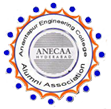TAW Agreement: What It Is and Why It Matters
TAW (Translation at Work) agreement is a specialized type of legal agreement that governs the relationship between a client and a translation service provider. It’s an important document that ensures smooth collaboration between the two parties and outlines their respective rights and responsibilities.
In this article, we’ll explore what a TAW agreement is, why it’s necessary, and what key elements it should include.
What Is a TAW Agreement?
A TAW agreement is a contract that establishes the terms and conditions of a translation project between a client and a translation service provider. It defines the roles of each party, the scope of work, the timeline, the payment terms, and other important details.
The purpose of a TAW agreement is to ensure that both the client and the translation service provider understand each other’s expectations and obligations, and that they are legally bound to fulfill them.
Why Is a TAW Agreement Necessary?
A TAW agreement is necessary for several reasons. First, it clarifies the scope of work and the expected outcomes, which helps to avoid misunderstandings and disputes later on. Second, it protects the rights of both parties by establishing clear guidelines for payment, deadlines, confidentiality, and intellectual property. Third, it provides a legal framework for resolving conflicts, if they arise.
In addition, a TAW agreement is often required by law or by the client’s own policies, especially in regulated industries such as healthcare or finance. It may also be required by the translation service provider to ensure that they are compensated fairly for their work and that their intellectual property rights are protected.
What Should a TAW Agreement Include?
A TAW agreement should include several key elements to ensure that it covers all the necessary details and protects the rights of both parties. Here are some of the most important sections that should be included:
1. Scope of Work: This section should define the exact nature and extent of the translation project, including the source and target languages, the type of content, and any special requirements or instructions.
2. Timeline: This section should establish the deadlines for each phase of the project, including submission of the source text, delivery of the translation, and any revisions or corrections.
3. Payment Terms: This section should specify the payment method, the amount, and the timing of payment. It should also outline the consequences of late or non-payment.
4. Confidentiality: This section should address the confidentiality of the source text and the translation, and any restrictions on their use or dissemination.
5. Intellectual Property: This section should define the ownership and use of any intellectual property created during the project, such as translations, glossaries, or termbases.
6. Liability and Indemnification: This section should clarify the liabilities of each party in case of errors, omissions, or negligence, and the remedies available to the other party.
7. Termination: This section should outline the conditions under which either party may terminate the agreement, and the consequences of such termination.
In summary, a TAW agreement is a critical document for establishing a transparent and productive relationship between a client and a translation service provider. By defining the scope of work, the timeline, the payment terms, and other key elements, it helps to ensure a successful outcome for both parties.


